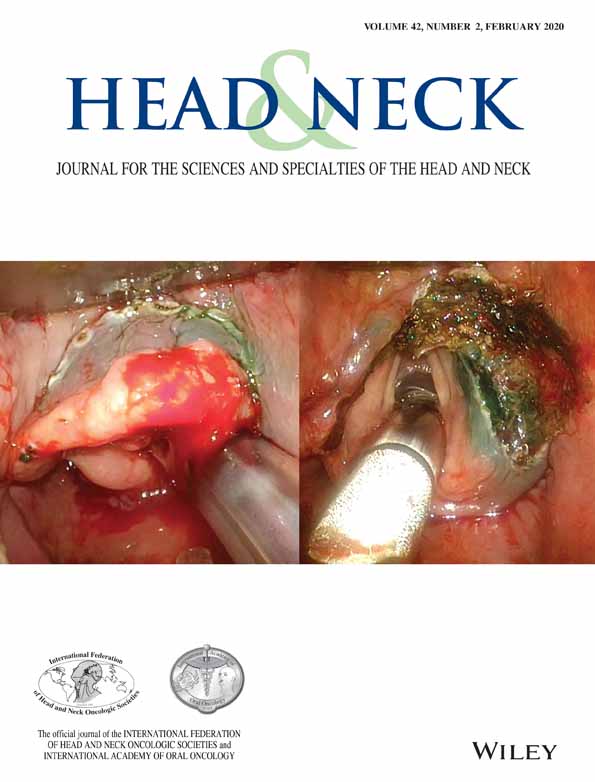American College of Surgeons National Surgical Quality Improvement Program assessment of risk factors for 30-day unplanned readmission in patients undergoing head and neck surgery requiring free tissue reconstruction
Abstract
Background
Unplanned readmissions have become a metric for measuring quality of care. We analyzed the factors associated with 30-day unplanned readmission (30dUR) following head and neck cancer resections that included free tissue reconstruction (FTR).
Methods
The 2012-2014 ACS-National Surgical Quality Improvement Program (NSQIP) data set was queried. Univariate and multivariate logistic regression analyses were performed.
Results
Out of 1114 cases, 121 had a 30dUR. The most common reasons were wound complications, including incisional infections, hematoma, and hemorrhage. A significant independent risk factor for 30dUR included a clean/contaminated wound class (odds ratio [OR], 2.27; 95% confidence interval [CI], 1.20-4.76). Patients receiving an osseous FTR had lower readmission rates (OR, 0.51; CI, 0.27-0.91). Discharge destination had no statistical significance.
Conclusions
Based on the NSQIP data set, 10.9% of patients receiving an FTR for head and neck malignancy had a 30dUR. Although large, population-based data sets have limitations, these results elucidate that these patients are at an increased risk for unplanned readmissions, which can guide patient expectations and discharge planning.
CONFLICT OF INTEREST
The authors declare no potential conflict of interest.




